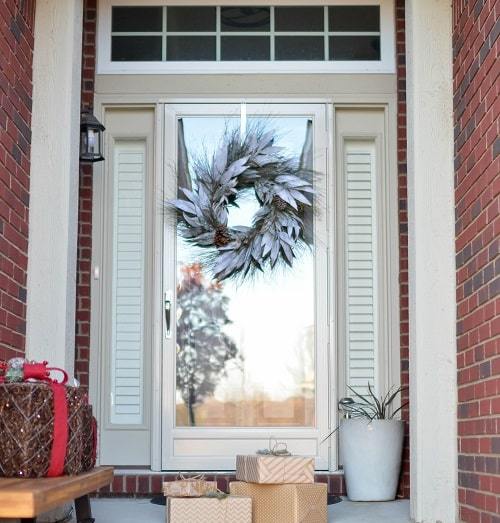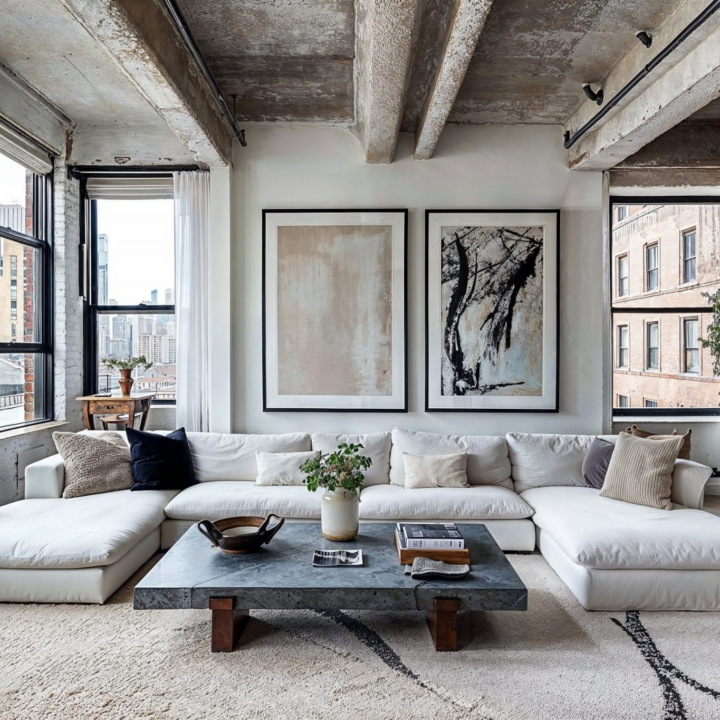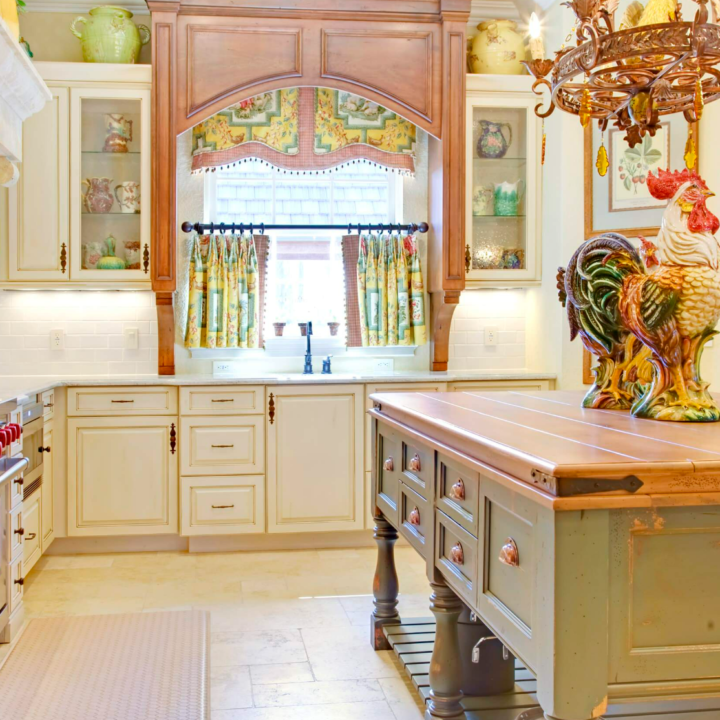Spiffy Speak
Choosing Lining for Window Treatments

Nothing can soften a room as much as fabric treatments like curtains, drapes and roman shades. While dressing your home with these, an important question to be addressed in the process is regarding the lining. Should they be lined? If yes, with what kind of lining? If you find yourself needing a bit of help while choosing the lining for drapes and roman shades, worry not, read on to discover the answers.
Order custom curtains and drapes from Spiffy Spools online in any size. Pick from over 3,000 fabrics and patterns!
Lining: Purposes and Types

Image by Jenn Feldman Designs
Lining refers to the second fabric stitched at the back of the draperies and shades. One of the most significant advantages of customized window treatments is that you can opt for lining whereas most machine-made products miss this fantastic feature and all the benefits they offer, including:
- Longevity: While keeping excess heat and light out of the house, drapes and shades are themselves most exposed to the same. Over time, a durable fabric will resist wearing away by usage but still warrant a change due to the sun-bleached effect. Linings shield the drapery/shade face fabric and thereby, help them to sustain their charm throughout their lifetime.
- Insulation: Double layering always produces better results at insulation capacity. So, be it harsh winter or harsh summer, you will have a more balanced and naturally maintained temperature indoors. That in turn translates to savings in the power bills incurred on artificial heating and cooling.
- Protection: By double filtering the sunrays, lined curtains and shades keep the harmful UV rays out of your home that can ruin the beauty of your wooden and fabric furnishings over time. If it’s a blackout, so much the better!
- Fullness: The second layer provides a thickness to the drapery that helps it to drape well and the pleats to develop a sumptuous shape. Roman shades with linings fold well with neat creases. So, if you want the best look for your curtains and shades, adding lining will guarantee you that – assuming that all other responsible factors are taken care of.
Well, so much for the applause-worthy benefits of linings in general. Now, we must introduce you to the types of linings Spiffy Spools offers and the specific contributions they can make to your home.
- Privacy Lining: This is a standard, drapery weight, white lining that helps to cut the harsh glare of the sun, but cannot aid in room-darkening or sound absorption beyond the degree that any fabric can. It helps with better draping as well. It also saves from severe wear and tear caused by usage.
- Blackout Lining: The fabric used in this lining is a chemically treated one that is able to resist heat and light to a considerable degree. Blackout lining ensures greater light and heat blockage than privacy lining. Besides, its thick weave helps to muffle sound and thereby, helps to create a quiet ambiance within the home.
Our blackout linings come in three colors – white, beige and gray – offering clients plenty of bandwidth to appease any decor style, especially if the rear side of the window treatment will be visible to an adjoining room or an outdoor living area. The white lining toes in line with the bright and airy aesthetics of casual spaces and decor styles like farmhouse, coastal and Scandinavian, and comes across as a privacy lining at first glance due to its color. The beige lining is preferred for warm-colored face fabrics, and the gray lining for cool-colored face fabrics for better color coordination. Overall, the blackout linings offer three neutral options that are incredibly versatile and can be teamed with all the drapery fabrics in our collection.
The Moment of Choice
Once we know the alternatives, we are presented with the apt question – which one? It’s simple. But in order to help you with the choice, we are laying out a few factors to consider before you make the decision.
- Position of the window: While east-facing windows receive the soft early sunrays, west-facing windows get the biting part. Determine the level of exposure that your window has to harsh sunlight.
- Purpose of the room: While a living room profits from a large, airy, sunny window, a bedroom seeks to fold itself in cozy darkness to allow good sleep. Define the level of protection you want from the sun for each room.
- Moisture and mold: Bathrooms are a tricky place because they need both privacy and ample sunlight. If they are covered off with overly layered window treatments, mold and mildew will conquer before you know it. So, factor in this point while deciding on a lining.

Image by Tiffany Leigh Design
In general, we may conclude that windows in bedrooms and nurseries should always be dressed with blackout curtains and/or shades for a sleep-friendly ambiance. Living rooms, dining rooms, foyers, and hallways will profit from privacy linings that give sufficient coverage from heat and light and don’t overdo this good thing. In bathrooms and kitchens, avoid blackout linings to help the room dry out faster and reduce mold formation. But however, any of these rooms need a reconsideration depending on the position of the window and the extent of heat and sunlight that it is exposed to, and the general climatic experience of your locale.
Remember that blackout linings are not just good to block light, they are also good at absorbing sound. In homes with creaking wooden floors and squealing toddlers, this quality of the window treatments can have amazing results. Blackout fabrics serve to muffle the shrill sounds and almost deaden the quieter ones. So, do consider using them in your reading area, study, and office too.
In nurseries and kids’ rooms that require a distraction-free ambiance and room-darkening, blackout linings can help the little ones to catch sleep easier. And, you don’t have to worry about the room starting to look like a dungeon because our blackout linings don’t cut off the light completely. You can still feel the soft glow of the daylight on the curtain or shade. So, your bedrooms will feel more safe and comfortable, especially for children who may feel insecure in pitch-dark bedrooms.
Keep in mind that the room-darkening capacity of blackout linings works in relation to the color and composition of the face fabric as well as the construction of the curtain/shade. So, a darker thick-weave fabric will produce a more effective room-darkening than a brighter loose-woven one when backed by blackout lining.
If you really want a starless dark sky to nod off during the day, you may profit from rich-textured heavier drapery featuring dark color tones. Avoid roman shades as their minimalistic construct will not fare as good as the sumptuous pleated curtains that use fabric almost three times the width of the window.
For better results, hang the drapery at least 6 inches above the window trim and extend them to the sides as well by that much to cancel the possibility of all light leaks from the sides. Use the hook and eye method to ensure that the curtain returns to the wall and covers the side gaps, proffering a neat look and total coverage. If you can drape the window ceiling-to-floor, nothing like it! Choose one of the stitched-in heading styles like inverted pleats or pinch pleats that with their uniform gather, secured pleats, and sumptuousness ensure better light control. And that’s it! You have your dark den ready for a sound sleep. Employ the same trick in your media room so you can worry less about disturbing those who are not watching the movie with you.
Except sheers, we highly recommend privacy lining for all curtains, draperies, and shades, and blackout linings for more insulation for windows that warrant more protection. But, there’s one exception here as well. We dissuade our clients from lining sheer fabrics because that would rob them of all the benefits of the translucence of the material.
Taking stock of all these aspects in light of the particular situations your home presents, you need to make a decision. But that decision will hopefully roll out like a ball now with so much information that you have gathered from this reading. We pride in providing all that you need for the perfect window treatment.
Order Custom Window Treatments from Spiffy Spools
Browse through our collection of 3000+ fabrics and now that you know all about the types of lining, you can decide on the one most suitable for your rooms. In case you still get hiccups during your shopping spree, don’t hesitate to contact us and we will make sure to smoothen out your drapery selection journey. Happy shopping!




